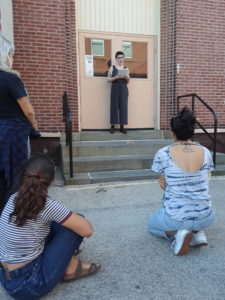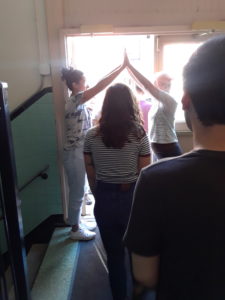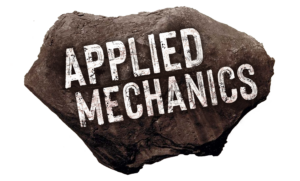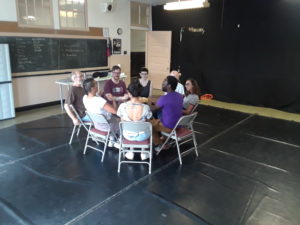
By Mary Tuomanen
How do we make political theatre for this charged moment in history?
How can art manifest our desires for a more just society?
How can we get an audience to imagine a better world?
These are some questions that Applied Mechanics has been wrestling with for years. Little by little, we started to develop tools and practices, as we struggled to avoid the common pitfalls of making political theater: the didactic propaganda play, the play that congratulates the audience for ideas they already have, or the purely issue-driven play that sees political action as a zero-sum game with yes or no answers. Instead, our shows encourage the audience look at structures — systems of power and oppression, structures of resistance, ecosystems of belief that allow humans to enter into cooperation together. How does the form of a society tell you about its values? How can we imagine whole new ways of being?
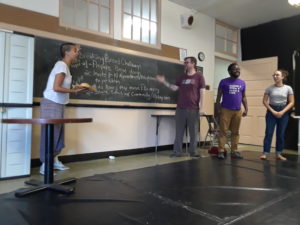
This past weekend, Applied Mechanics had the pleasure of leading a workshop for artists interested in this sort of evocative political theatre-making. The amazing group of participants were varied and age and background — some seasoned performers, some recent art school grads, some visual artists, some directors/playwrights — all preoccupied with similar questions of how to manifest their desire for a better world through their art. Many voiced their trepidation at being in such a workshop. Some brave souls had signed up specifically because they felt afraid.
From the first hours of the first day, the group plunged headlong into collaboration prompts. They were not easy ones either: Make an invisible thing visible. Make a political action. Go find something that transforms behavior. Turn that interdiction into an invitation. Make a model of a world that reflects your values. Combine your model with someone else’s. Make a collective utopia.
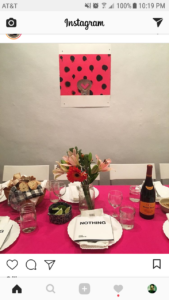
The results were more beautiful than we could have imagined.
There were private spaces of joy and rage that invited us to make noise, throw objects, cry out.
We saw performers code-switching, putting on and taking off (metaphorical) masks. We saw enthusiasm and trust. We saw serious investigation and the difficulty of making a society that fits everyone’s needs.
We saw the painfully slow process of huge change untaken by small steps, as represented by feeding tiny scraps of paper to a fan. Whenever the performer tore off too big of a piece of paper, she had to backtrack. “Whoops. Tried to do too much.” The pain of this truth was felt by many of us!
We saw the holiness of breaking bread together.
We saw echoes of trauma. We saw disparate groups moving together as slowly as tectonic plates, waiting for the earthquake.
We saw the importance of consent in establishing a welcome, or touch between people.
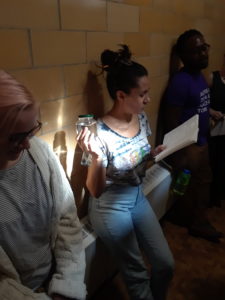
We puzzled over ways to give space to others, to create a sense of invitation, and to make an inclusive, low-pressure offer to an audience.
We examined ourselves, and our own tendencies and behaviors, making a map between the way we act and the way we want to be.
We honored some of our heroes, be they our biological foremothers or spiritual foremothers.
We imagined life as we wanted it to be, and brought it into the room.
By the end of this workshop, the group felt like an ensemble. We had created so many rituals of togetherness that it was hard to leave that room without carrying a bit of each person with us. We can’t wait to see more of what these folks make, and thank them all for the radical worlds they birthed from their imaginations this weekend!
